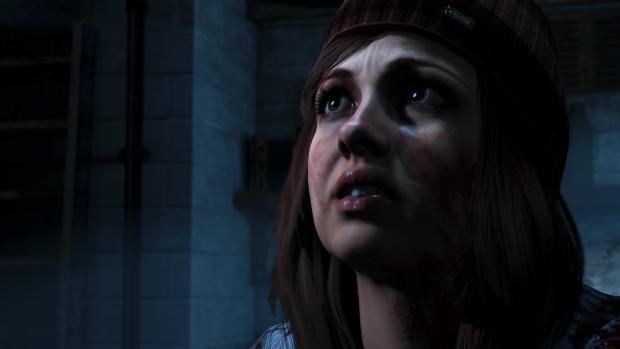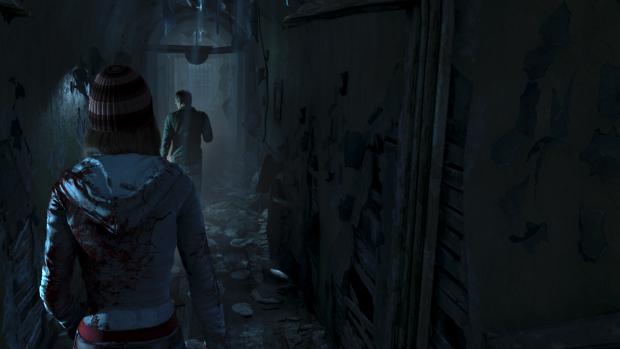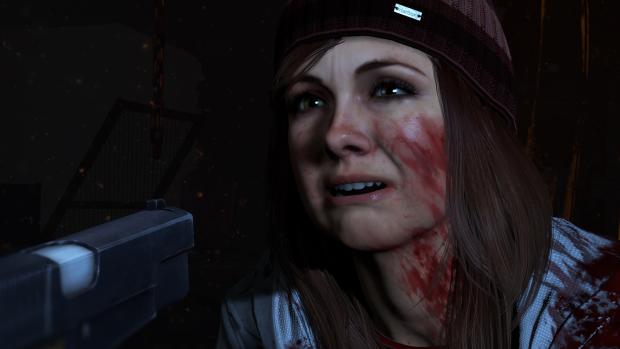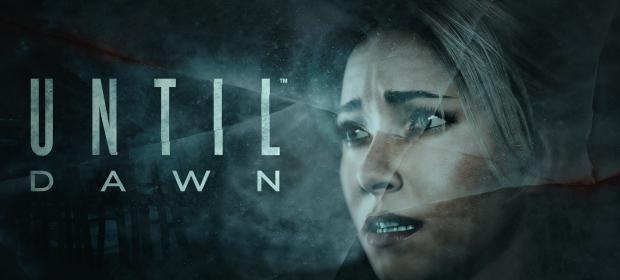Creating a new IP is always risky business in the games industry, never more so than now. Independent titles can thrive without the big-name value of a franchise attached to them, but the number of original triple-A games that manage to see a commercial release is relatively small, and those which actually earn enough sales to become a qualified success even smaller. Perhaps it is a good thing that Until Dawn has been tagged by many as the Heavy Rain of Horror games, then. Heavy Rain is a known quantity and was a commercial success for Sony – so Supermassive Games could do well to bask in its reflected popularity somewhat.
But that isn’t altogether fair to Until Dawn. After getting an extended hands-on session with one section of the game, it is clear that a lot of care and attention has gone into trying to replicate the teenage slasher film genre in game form. Starring Hayden Panettiere of Heroes fame, along with a cast of other fresh-faced, young American actors, who are being slowly stalked by a clown-masked psychopath, Until Dawn immediately draws parallels with some of the iconic horror franchises of the nineties, such as Scream and I Know What You Did Last Summer.
But obviously the unique factor present here is that you play out the parts of the survivors, and your actions will help determine who lives and who dies. Visiting a ski lodge for the birthday party of one of our group, things predictably go horribly wrong and people begin to disappear under suspicious circumstances. The full game will give you different teens to control at certain points, but for this demo we get to play the part of a particularly scared girl named Ashley, who is looking for one of her lost friends along with Chris, and the two of them (rather predictably for a teen movie) harbour unspoken feelings for one another. It is these sort of horror tropes that, whilst cheesy on the surface, actually help to perpetuate the homage.

Control of the characters is direct one-to-one stick movement, with hotspots appearing on-screen for interactions and items to examine. Some of these will require basic motion control movements to activate, such as twisting the control pad to turn a key, or swiping to the side to open a door. The presentation and implementation of these interactions is a very close mimic of Heavy Rain, and anyone who has played that will find Until Dawn’s controls second nature. There are no complex actions to perform and very little is dexterity or time-based, presumably to make the cinematic experience more accessible and suitable for gamers and non-gamers alike. An interactive movie should be something that could attract a more casual audience, so intricate controls are wisely avoided.
Quick time events are an important part of Until Dawn and any action scenes will consist of them. This is another way to keep the gameplay relatively simple and accessible, as most people can understand and pick up QTEs relatively quickly. Of course there are many detractors of the mechanic, but in an adventure game where suspense has prominence over action, it makes sense. The marketing promises a different gameplay experience for every gamer and a story that is shaped by you. In the short demo alone there were several choices that you could miss, and would only effect minor changes as you went forward, but also one big climactic decision that would certainly change how the narrative develops going forward. By mixing big and small changes to the game world, it helps the player to believe that each action they commit to will have a positive or negative impact on their experience.

One interesting idea implementation is the flashlight. You character carries one automatically, and rather than just be a static element, you can control it independently of normal movement by pointing the control pad in different directions. The use of light and shadow is obviously critical in a horror game, so giving control over what is illuminated and what is not actually adds a little extra layer of suspense as you wait for something shocking to appear in the beam of light from your torch.
Is the game scary, though? So far, from the brief time I got to spend with the game, I can definitely say that it doesn’t scrimp on the tension and eeriness, despite having to resort to a couple of cheap shocks. As soon as I was plunged into the demo, I got the feeling I was being watched and that at any point something could burst out from the shadows at me. Despite this feeling of dread, and the constant threat of locked doors, blind corners and strange torture implements on show, Until Dawn does a good job of creating an edge-of-your-seat feeling. You know something bad is going to happen, but rather than keep ramming the psychopath down your throat and make the threat obvious, the enemy is kept in the shadows and it is the fear of what might happen that is worse.

The sound design plays a big part in the level of fear too, with all of the genre stereotypes you can imagine being utilised. Creaky doors, the strange clanks of metal, and distant screams all help build up the atmosphere of fear, with the more and more panicky protagonists and their whimpering just making the player feel even more insecure. There is a difference between playing a horror game as a hardened special ops soldier, or as a terrified young civilian. You know that your characters are vulnerable and there is little they would be able to do to defend themselves from attack, and this sense of helplessness certainly adds to the horror. Until Dawn looks fantastic, too, and the motion capture work has yielded some impressive results. You can feel the emotion radiating from the characters, whose faces manage to avoid the uncanny valley effect in order to appear like real actors rather than rendered models.
Until Dawn is promising, then, but the true measure of its success will be how much of an impact your decisions will really have and whether the development of the story really does change as you forge your own path. For instance, in Heavy Rain you feel like every little action you perform or any clue you miss will have an impact on the case, but in a later Quantic Dream title Beyond: Two Souls, your only real choices happen infrequently and make little difference to the outcome. Making an interactive movie is all well and good, but if the interactions are only skin-deep, players won’t feel any connection to the title. We have seen over the last couple of years how popular games that offer choice can be, but they quickly become divisive if the choices don’t matter.
Preview based on time spent with Until Dawn at Eurogamer Expo 2014.






